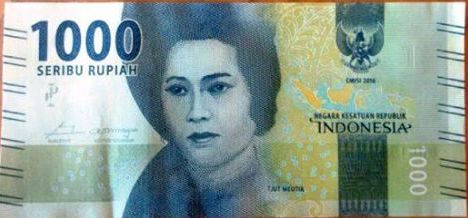22 December 1928 – forgotten day of women’s activism
Hari Ibu, mother’s day, celebrated today in Indonesia has an intriguing, yet often forgotten, feminist history. Originally the day was chosen to commemorate the First Congress of Women held in 1928 in Mataram just few months after the historic Youth Congress that is considered as one of the culmination point for demands for decolonialization and formation of Indonesian nationalism.
The women’s congress focused on questions of right to education, child marriage, divorce and secular marriage law, but also Western influence on women. During the authoritarian presidency of Suharto also known as the ‘New Order’ turned the day into Hari Ibu (Mother’s day), with the focus on state ideology on motherhood (state ibuisme), being a good wife and mother. The day has been since celebrated through competitions and quizzes that test women’s abilities to be good mothers and wives.
Scraps of Hope video ‘MoU Helsinki – Reclaiming back History’ is a reflection of the gendered impacts of the Aceh peace process, sexual politics and focus on morality of women, but it also importantly, brings back to the peace table (video is shot at the location of signing of the peace settlement in Finland) the discussion on exploitative peace time political economy and gendered impacts of natural disasters. It provides an alternative vision for the celebration of Hari Ibu in ways that reclaims back the history and addresses some of the most burning questions on economic justice and wellbeing.
Populist reclaiming of history – the case of Cut Meutia and new banknotes
Indonesian government has released new banknotes on Monday. New 100,000, 50,000, 20,000, 10,000, 5,000, 2,000 and 1,000 Rupiah banknotes feature an interesting selection of historic figures, nationalists, and civilian and military participants in anti-colonial movement: president Sukarno, prime minister and signatory of proclamation of independence Mohammad Hatta, the last prime minister Djuanda Kartawidjaja (after whom the post was abolished allowing greater powers for the president), member of Volksraad (Dutch East Indie’s Parliament) and preparatory committee for Indonesian independence Sam Ratulangi, Papuan pro-Indonesia politician Frans Kaisepo, politician and chairperson of Nahdlatul Ulama Idham Chalid, member of Volksraad and advocate of plantation labour rights Mohammad Hoesni Thamrin, politician I Gusti Ketut Pudja, colonel of Indonesian national revolution TB Simatupang, founder of socialist Indies party Tjipto Mangunkusumo, professor (rural technology) Herman Johannes and last but not least, Acehnese female military commander Cut/Tjut Meutia (1870-1910) who fought in the war against the Dutch.
The 1.000 Rupiah banknote with Cut Meutia has caused debate in Aceh. Not because Cut Meutia is only the third Acehnese national hero to be featured in the Indonesian banknotes after Teuku Umar and Cut Nyak Dhien a couple who fought against the Dutch. Or that it was the lowest nomination given to a woman in the group of eleven men. Instead, Acehnese legislative assembly member Asrizal H Ansnawi (PAN) has questioned the right of the Bank of Indonesia for picturing Cut Meutia without Islamic headscarf and asked the banks in Aceh not to circulate the new banknote in Aceh.
Few days into this request, a number of emerging Acehnese scholars such as Raisa Kamila and Herman Syah have responded to this demand. In their response to this attempt to ‘reclaim history’ they illustrate that from the sources available (photographs, illustrations and narrations in books), Cut Meutia in fact did not wear a headscarf and like many of the female military commanders and elites of her time, her dress did not consist of what is these days considered as ‘traditional’ Acehnese, or modest Islamic, dress.
Raisa Kamila further suggests, that the case of the banknote is a continuation of a longer Acehnese and Indonesian history in which the female body becomes the battleground for politics and violence, but a one that is not controlled by women: Gerwani women were stripped in 1965 in search of communist tattoos, Chinese women were raped during the Jakarta riots in 1998 and women were shaved and publicly paraded in the streets of Banda Aceh in 2001 when the legislation on Islamic dress code was brought up in Jakarta.
Reprint of the talks held at the First Congress of Women of 1928:
Susan Blackburn (2008) The First Indonesian Women’s Congress of 1928. Monash Asia Institute
-“- (2007) Kongres Perempuan Pertama. KITLV-Jakarta.
Read my earlier analysis (Jauhola 2010) of the celebration of Hari Ibu and gendered uses of national emblem Garuda, bird-like creature.

